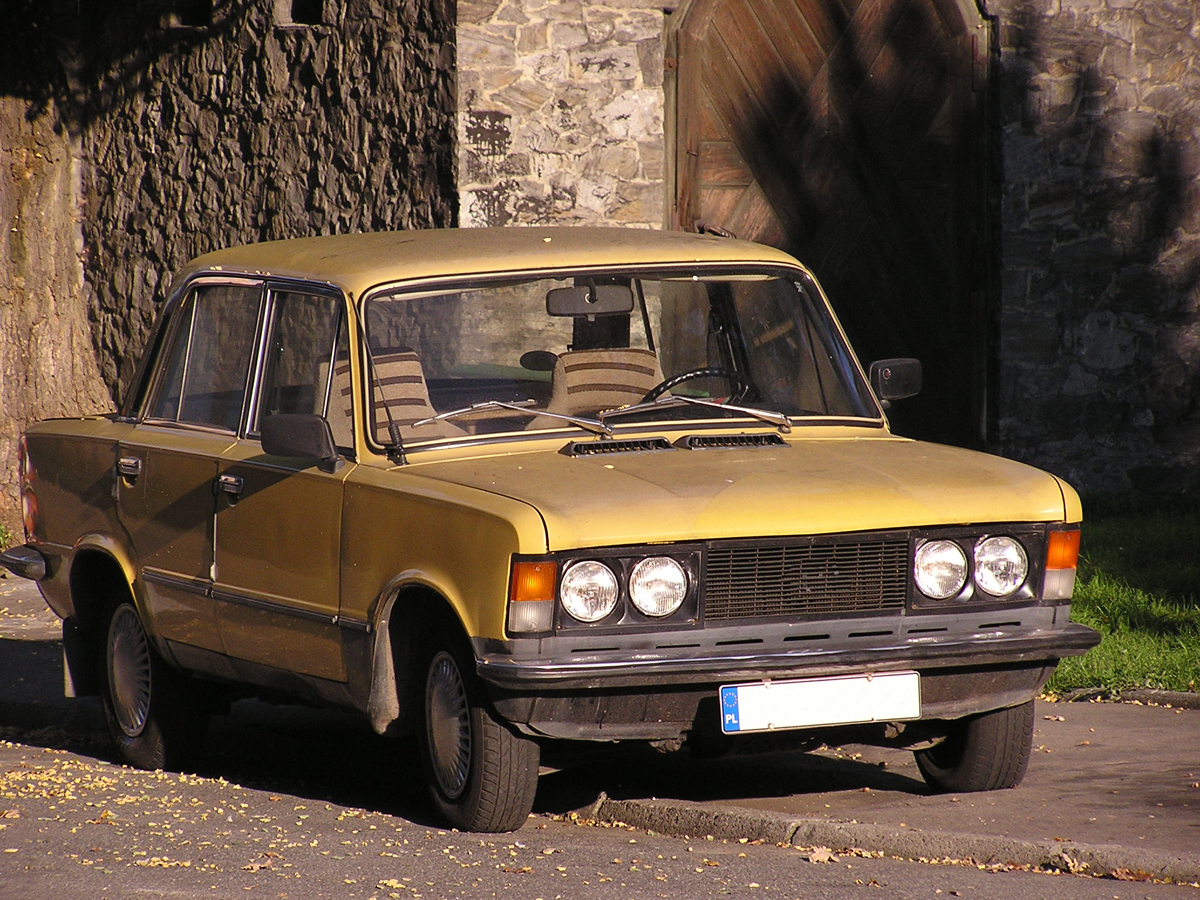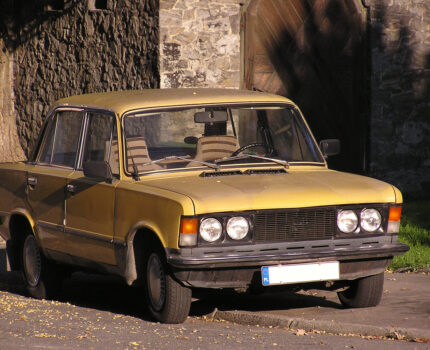When it comes to the question in the title, it’s not just about the financial, technical, and organizational aspects. Legal requirements also need to be taken into consideration. What can you do with a machine and when? At every training regarding essential safety requirements for machinery and CE marking, a recurring question is asked like a mantra: is re-certification for CE necessary after modernizing a machine?
Now, with the new Machinery Regulation [1]Regulation (EU) 2023/1230 of the European Parliament and of the Council of 14 June 2023 on machinery and repealing Directive 2006/42/EC of the European Parliament and of the Council and Council … Continue reading being published, this topic is heating up even more because they’ve introduced a definition for substantial modifications.
Life after life
Using a machine leads to wear and tear, which means you’ll eventually need to repair it (to bring it back to its original state). Sometimes, modernization can be cheaper than repair — for example, replacing several cabinets filled with contactors (which are, perhaps, no longer available) with a single programmable controller. It happens that after modernization, only the machine’s shell remains from the original. Theoretically, it is even possible that after years of replacing damaged parts (actuators, guards, gears, cables…), not even a single atom of the original machine is left. Yet, it is still the same machine — a welder, a milling machine, or a robotized welding chamber.
But it can also happen that you take one (or several) machines and create a completely different one. A boring machine from a lathe, a straightening machine from a press, a cluster of milling machines from several machining centres and robots.
When does a new machine arise? Where is the boundary between modernizing a machine and building a new machine based on an old one? And why is this important?
CErtification
CE Marking [2]NB. The CE Mark is something different from the Declaration of Conformity (in which the machine manufacturer states that the machine meets the essential safety requirements), but it is equivalent in … Continue reading is assigned to a machine [3]when in accordance with the law; reality sometimes goes beyond this limitation only in one situation — when the machine appears within the European Economic Area, i. e., when it is being sold or put into use for the first time.
Where is there room for modernization here? There isn’t any. The „Guide to the Machinery Directive” (an unauthorized interpretation of the Machinery Directive published by the EC) mentions „substantial modifications,” but this refers to changes made before the machine is introduced to the market. However, the usage (and expansion) of the machine are entirely beyond the scope of the directive.
§ 82 Machinery modified before it is first put into service
In some cases, machinery is sold to an importer or a distributor who then modifies the machinery at the request of a customer before the machinery is put into service for the first time. If the modifications were foreseen or agreed by the manufacturer and covered by the manufacturer’s risk assessment, technical documentation and EC Declaration of Conformity, the original manufacturer’s CE marking remains valid. On the other hand, if the modification is substantial (for example, a change of function and/or performance of the machinery) and not foreseen or agreed by the manufacturer, the original manufacturer’s CE-marking becomes invalid and has to be renewed – see §72: comments on Article 2 (h). The modifier is then considered as the manufacturer and must fulfil all the obligations set out in Article 5 (1).
Guide to application of the Machinery Directive 2006/42/EC
The situation seemingly changes with the enactment of the regulation regarding machines, which defines the so-called „substantial modification” (3.16) and equates it with the production of a new machine (18). This equivalence, however, indicates that the definition of a substantial modification establishes it as the boundary separating the mentioned modernizing and building.
A natural or legal person that carries out a substantial modification of machinery or a related product shall be considered to be a manufacturer for the purposes of this Regulation and shall be subject to the obligations of the manufacturer set out in Article 10 for that machinery or related product or, if the substantial modification has an impact on the safety of only machinery or a related product that is part of an assembly of machinery, for that affected machinery or related product, as demonstrated in the risk assessment.
EU Regulation 2023/1230, Article 18, Paragraph 1
substantial modification — approaches
The Machinery Regulation is not yet in force, but there is no doubt that its definition of substantial modification will be applied as the demarcation line between modernization and the creation of a new machine. One may disagree with this definition, but it must be understood and applied, as rejecting current regulations can lead to difficulties.
Let’s start with the version that luckily did not come into force, i.e., from the original draft of the regulation (at that time it was still the Regulation on Machinery Products, not machines).
‘substantial modification’ means a modification of a machinery product, by physical or digital means (1°) after that machinery product has been placed on the market or put into service, which is (2°) not foreseen by the manufacturer and as a result of which (3°) the compliance of the machinery product with the relevant essential health and safety requirements may be affected;
Article 3, point 16 of the Proposal for a Regulation on Machinery Products (numbering by the author)
Ad 1°. If the change were made before being placed on the market, it is evident that the responsibility for it would lie with the introducer (manufacturer). Therefore, this provision adds little, but also does no harm.
Ad 2°. If the change was foreseen by the manufacturer (i.e., probably described as such in the instructions for use), it is clear that it must have also been taken into account in the manufacturer’s risk assessment, and thus in the declaration of conformity.
Ad 3°. Practically any change can result in non-compliance with requirements, even something as simple as repainting the machine — because, for example, buttons on the control panel might accidentally be repainted, and the colors will no longer comply with EN 60204-1. Our native EU enthusiasts were not bothered by this,[4]when I raised this issue at a meeting organized by the Ministry of Development (as part of public consultations) but fortunately someone (other Member States?) insisted on a (nomen omen) substantial modification to this definition.
substantial modification — definition
‘substantial modification’ means a modification of machinery or a related product, by physical or digital means (1°) after that machinery or related product has been placed on the market or put into service, which is (2°) not foreseen or planned by the manufacturer, and which affects the safety of that machinery or related product, by (4) creating a new hazard, or by increasing an existing risk, which (5°) requires:
(a) the addition of guards or protective devices to that machinery or related product the processing of which necessitates the modification of the existing safety control system; or
(b) the adoption of additional protective measures to ensure the stability or mechanical strength of that machinery or related product;
Regulation EU 2023/1230 Article 2 Point 16
NB. „Related product” („machine in a broad sense,” as defined today by the Guide to the Machinery Directive) is a (successful) way out of the current collision of designations — because the term „machine” is defined in the directive in two different meanings (Article 2, paragraph 1 versus Article 2, point a).
The definition has significantly lengthened and complicated, but in this case, one can hardly blame it for that.
Ad 4°. A necessary condition for a change to be „substantial” (meaning that it is treated as building a new machine) is the introduction of a new hazard or an increase in risk. The issue of hazard is clear — if, for example, a clamp is modified so that in addition to crushing, there is also a possibility of cutting; or a completely new hazardous factor is introduced, e.g., instead of cold forming, the material is heated.
Less clear is the „increase in risk” because nowhere in the regulations is it specified how to measure this risk. Everyone will agree that increasing the speed of moving elements from 10 mm/s to 1 m/s certainly increases the risk… unless someone disagrees and conducts a risk assessment that doesn’t show this increase. And increasing the speed of the same element from 50 to 100 mm/s does increase the risk, or not?
Risk differs from hazard in that it takes into account not only the magnitude of potential harm but also the likelihood of its occurrence. This likelihood is influenced, among other things, by the worker’s exposure to the hazard, i.e., the time spent with the machine, i.e., work organization issues, which the manufacturer cannot control. If the user processes a material that requires more frequent cleaning inside the machine, e.g., twice per shift instead of once a day, would such a change in usage be a basis for considering the machine (which hasn’t changed itself) as substantially modified?
Having a ‘new hazard’ has the advantage of being easier to identify than an increase in risk,[5]similar to how, for example, a tax on revenues is easier to determine than a tax on profits but this certainly doesn’t mean it’s a flawless criterion. It’s easy to imagine a modification that gives rise to new hazards which, however, are meaningless from the standpoint of risk assessment. For instance, adding the risk of skin cut to a machine that already posed the risk of limb amputation.
Ad 5°. Besides introducing a new hazard or an increased risk, a modification must necessitate the implementation of additional protective measures. Here we encounter two situations. Firstly (letter b), a change in loads may compel a modification of the machine’s mechanical structure, requiring additional reinforcement. If we want to use a 10-ton crane to lift 20 tons, we have to rebuild it. Assessing the strength of the structure is challenging, hence it’s not surprising that every load increase requires assuming responsibility.
The most significant constraint within the definition appears to be the requirement of modifying the safety control system (letter a). What does this imply?
exempla trahunt
Let’s consider a fenced enclosure of milling machines, where a robot transfers components. The entire enclosure constitutes an assembly of machinery (i. e., one machine). The safety system has been realized in a way that all automatic motions stop upon breach of the optical barrier. Which modifications will be treated as substantial?
We introduce larger machines into the enclosure, requiring an increase in the height of the guards. However, this change has no impact on the control system. It doesn’t constitute a substantial modification.
We raise the maximum speeds, prolonging the stopping time and necessitating the replacement of the optical barrier with a light curtain. We mount the curtain in the same way as the barrier, without altering the control system — this isn’t a substantial modification.
We replace the barrier with blocking shields (doors) due to a new material’s risk of splattering. The automation experts manage to attach door position sensors in place of the curtain, without changing the control system — this isn’t a substantial modification.
We add another machine tool to the enclosure… and ponder over what the legislator meant by ‘safety control system’. Does adding another recipient of the same stopping signal constitute a modification of the system or not? On one hand, the added machine is connected to the safety system and, in that sense, is a part of it; on the other, the control system hasn’t changed, it’s sufficient that the machine responds appropriately to the stopping signals issued for the other machines. But even a more stringent interpretation (treating adding another machine as a modification of the safety control system) doesn’t necessitate the implementation of additional protective measures beyond the existing guards (fixed and interlocking). Thus, it isn’t a substantial modification.
We add another robot. Surprisingly, few integrators know that if several robots are located in the same cell, and they can all be taught simultaneously (via portable panels or teach pendants), each of these robots must stop upon the signal from each panel, in accordance with ISO 10218-2. If we have, for instance, three panels, each must have an enabling device pressed on it to allow any robot to move. Therefore, adding another robot implies adding another protective measure (enabling device) and involves a substantial modification of the safety system (accounting for the new panel by all existing robots). However, an alternative approach could allow only one robot to operate at a given time (in learning mode, of course), by providing access to only one panel at a time, which attaches to the selected robot. No new protective measure is introduced — this isn’t a substantial modification.
Conclusion
The new definition of ‘substantial modification’ undoubtedly simplifies matters formally (since we finally have a criterion for when a modification is equivalent to building a new machine) and complicates them in practice (as what was previously considered modernisation may now be classified as building anew). However, this isn’t a significant inconvenience; it’s just about a few documents (declaration, instruction) — unless we’re modifying a machine mentioned in Annex I.A, which only a notified body can consider compliant with the essential requirements. But that’s a topic for another tale.
Translated with vast help of Aria and ChatGPT. Image by mzacha on FreeImages.



original Polish version: https://ocenaryzyka.pl/2023/naprawiac-czy-wymieniac-modernizacje-maszyn-dzis-i-jutro/